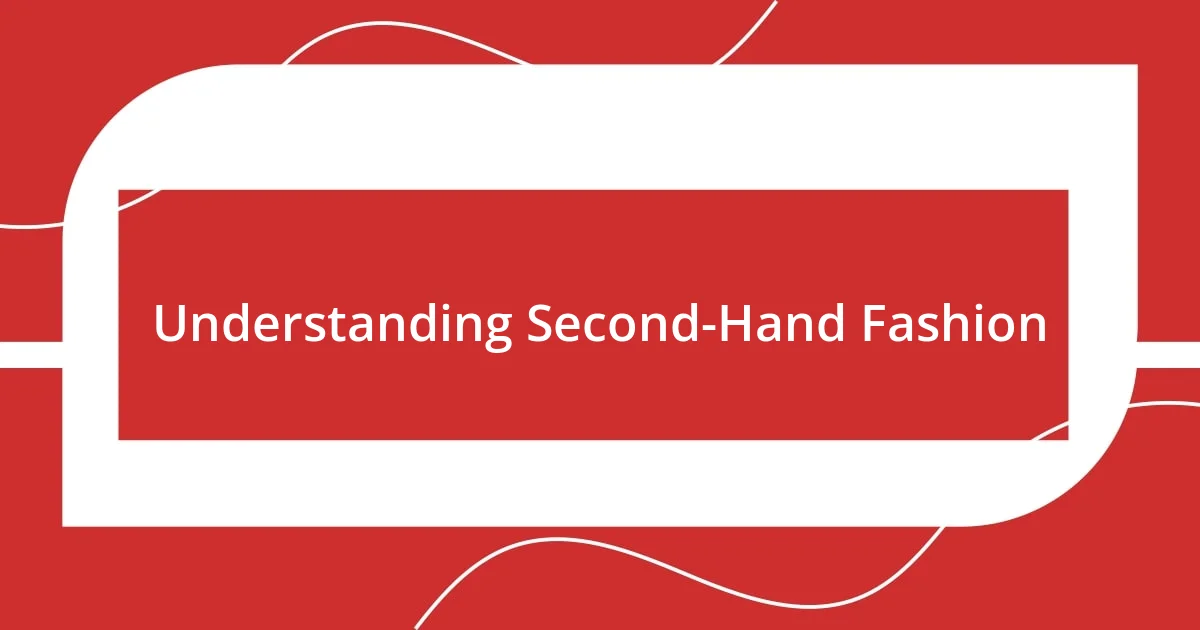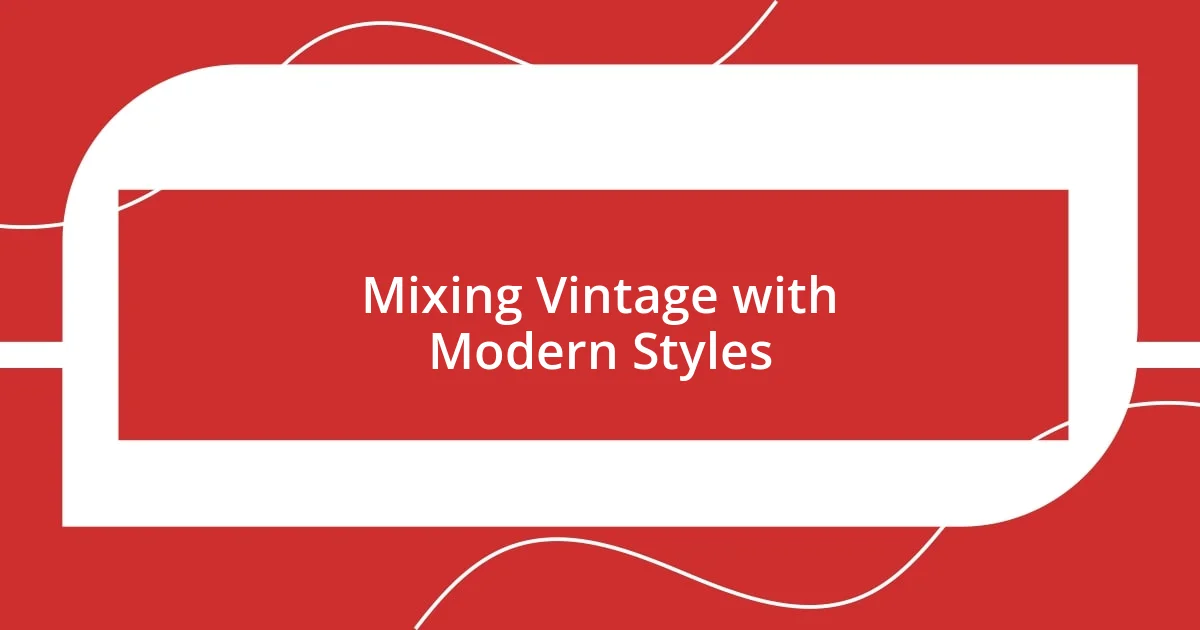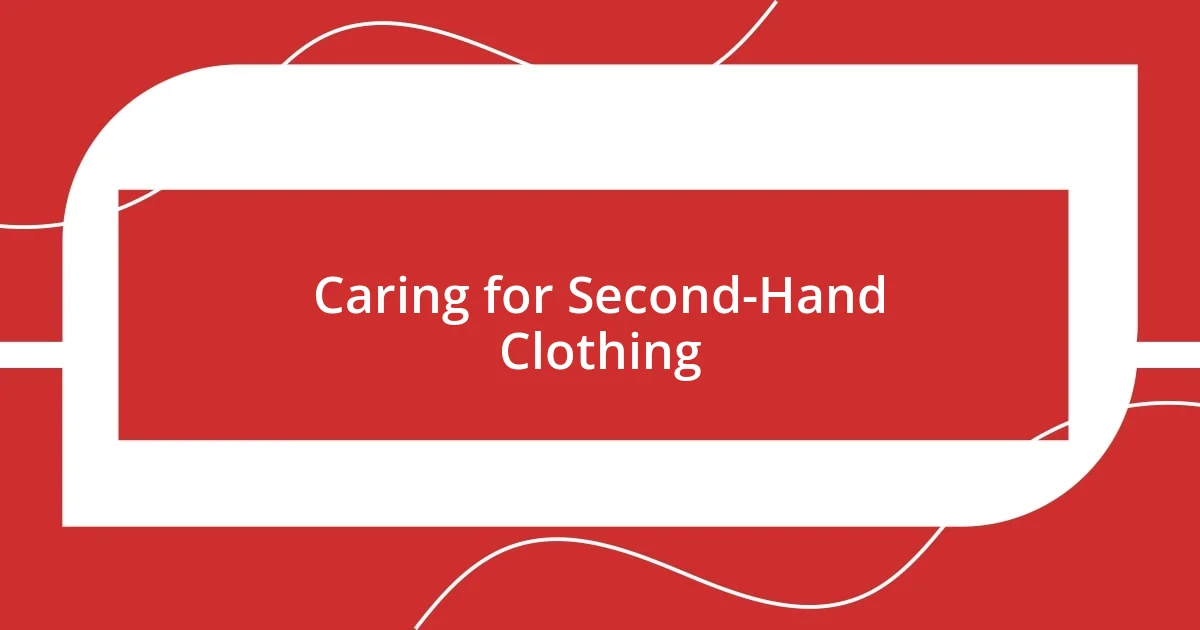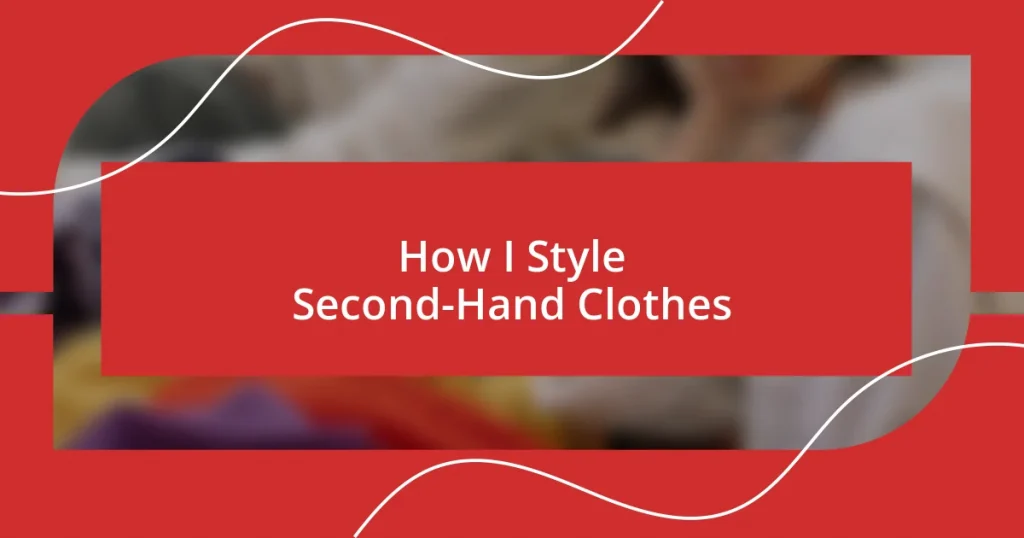Key takeaways:
- Embrace second-hand fashion for sustainability and unique style, allowing personal expression and reducing waste.
- Mix vintage and modern pieces to create eclectic outfits that tell a story and reveal personal creativity.
- Caring for second-hand clothing through proper washing, storage, and minor repairs ensures longevity and maintains their unique charm.

Understanding Second-Hand Fashion
Second-hand fashion often opens the door to a more sustainable wardrobe. I remember my first thrift store adventure; it felt like a treasure hunt where every rack held the potential for something unique. Isn’t it exciting to think about the stories behind each piece of clothing? Each garment carries a history, a previous owner who perhaps wore it on a memorable day.
As I explored second-hand shops, I found joy in expressing my individual style without the pitfalls of fast fashion. There’s something special about curating outfits that reflect personal taste rather than fleeting trends. Have you ever tried combining vintage and modern pieces? It’s a rewarding way to create standout looks while honoring the past.
Understanding second-hand fashion also involves embracing the flaws and quirks of pre-loved items. I’ve discovered that a small imperfection can add character and charm. It can also be a conversation starter—who hasn’t admired a unique vintage jacket and asked where it came from? In those moments, we share not just styles but also connections that span generations.

Benefits of Wearing Second-Hand Clothes
Finding joy in the world of second-hand clothing extends beyond mere aesthetics—it can be a simple yet impactful choice that benefits our planet. I remember the first time I learned about the environmental impact of fast fashion; it was eye-opening. Realizing that each time we opt for pre-loved garments, we’re making a statement against waste felt empowering. Wearing second-hand clothing allows me to contribute to a more sustainable future while still expressing my style.
Here are some of the key benefits of wearing second-hand clothes:
- Sustainability: Reduces waste and minimizes the carbon footprint associated with producing new clothing.
- Cost-effective: Often, you can find high-quality items at a fraction of the retail price.
- Unique Style: Second-hand pieces allow you to curate a wardrobe that’s truly one-of-a-kind and free from cookie-cutter fashion trends.
- Quality: Many vintage items are made with higher quality materials that stand the test of time.
- History: Each piece has a story, adding a layer of depth to your wardrobe that new items simply don’t offer.

Mixing Vintage with Modern Styles
Mixing vintage and modern styles creates a unique blend that tells a story. I recall a day when I paired a bright, contemporary blouse with a high-waisted floral skirt from the ’70s. The juxtaposition fascinated me—how the modern top brought a fresh vibe to the vintage skirt while celebrating both eras. Have you ever noticed how new items can breathe life into your older finds? The contrast can create an eclectic yet sophisticated look that stands out.
Blending these styles isn’t just about aesthetics; it’s about confidence. I’ve often found that wearing a vintage piece with a current accessory, like a sleek belt or trendy shoes, makes the outfit feel more grounded and relatable. It’s like holding onto a piece of history while keeping up with today’s trends. The best part? I tend to attract compliments when I wear a finely tailored vintage blazer alongside my favorite skinny jeans. It sparks conversations, and I love sharing how I mixed these two worlds.
When I shop for second-hand clothes, I look for vintage details—tartan patterns, unique buttons, or even a classic denim jacket. Modern pieces that harmonize with these features can transform an outfit. Think of a chunky knit sweater paired with a vintage A-line skirt, or tailored trousers alongside a graphic tee. The possibilities are endless, and it allows me to express creativity in ways that feel genuinely me.
| Vintage Style | Modern Style |
|---|---|
| Unique patterns and textures | Minimalist and clean designs |
| Timeless appeal | Trend-driven and dynamic |
| Higher-quality, long-lasting materials | Access to innovative fabrics |
| Character and historical value | Fresh interpretations of fashion |

Accessorizing Second-Hand Fashion
Accessorizing second-hand fashion can be a delightful way to express individuality and enhance your style. I remember once adding a bold statement necklace to a simple thrifted dress—suddenly, the outfit felt transformed and I felt like a million bucks. Have you ever experimented with layering accessories to elevate a look? Sometimes, it’s the small touches that can create a big impact.
When I rummage through accessories at second-hand stores, I often uncover vintage earrings or scarves that add character. There was a time I found a beautifully patterned silk scarf that I now tie around the handle of my handbag. This simple accessory choice not only keeps my bag looking unique but also sparks conversations about fashion choices and sustainable living. Isn’t it amazing how a single item can reflect both personal taste and an eco-conscious mindset?
Belts are another effective way to breathe new life into second-hand garments. I vividly recall cinching a loose oversized dress with a colorful, thrifted belt. It not only defined my waist but also brought a playful energy to the outfit. Think about it: how often do accessories give you the confidence to wear something you doubted? With a little creativity, I truly believe that accessorizing can turn even the most casual second-hand find into a showstopper.

Caring for Second-Hand Clothing
Caring for second-hand clothing is crucial if you want to maintain its charm and longevity. I learned the hard way that not all fabrics react the same way to washing. When I put my favorite vintage dress in the washer without checking the label, I ended up with a shrunken version that barely fit my doll. Now, I always read care labels and wash items in cold water, using gentle detergent. It’s a small step that makes a big difference!
I find that storing second-hand pieces properly is just as important as washing them. I’ve started using padded hangers for delicate blouses and stacking heavier sweaters on shelves to prevent stretching. I remember a time when I tossed a beautiful wool cardigan in a pile, and it ended up with unsightly creases that took forever to remove. It really drove home the point: a little extra care in how you store clothes can help preserve their shape and quality.
Lastly, regular inspections for small repairs can save a lot of heartache later. I often take the time to sow buttons back on or fix tiny tears soon after I buy something. Just the other day, I came across a cute pair of vintage jeans that needed minor seam stitching. Instead of pushing it to the side, I grabbed a needle and thread, and you know what? The moment I slipped those jeans on, I felt a sense of pride knowing I had restored a piece of history. Have you ever had a similar moment where a simple act of care transformed how you felt about an item? Trust me, it’s worth it!















